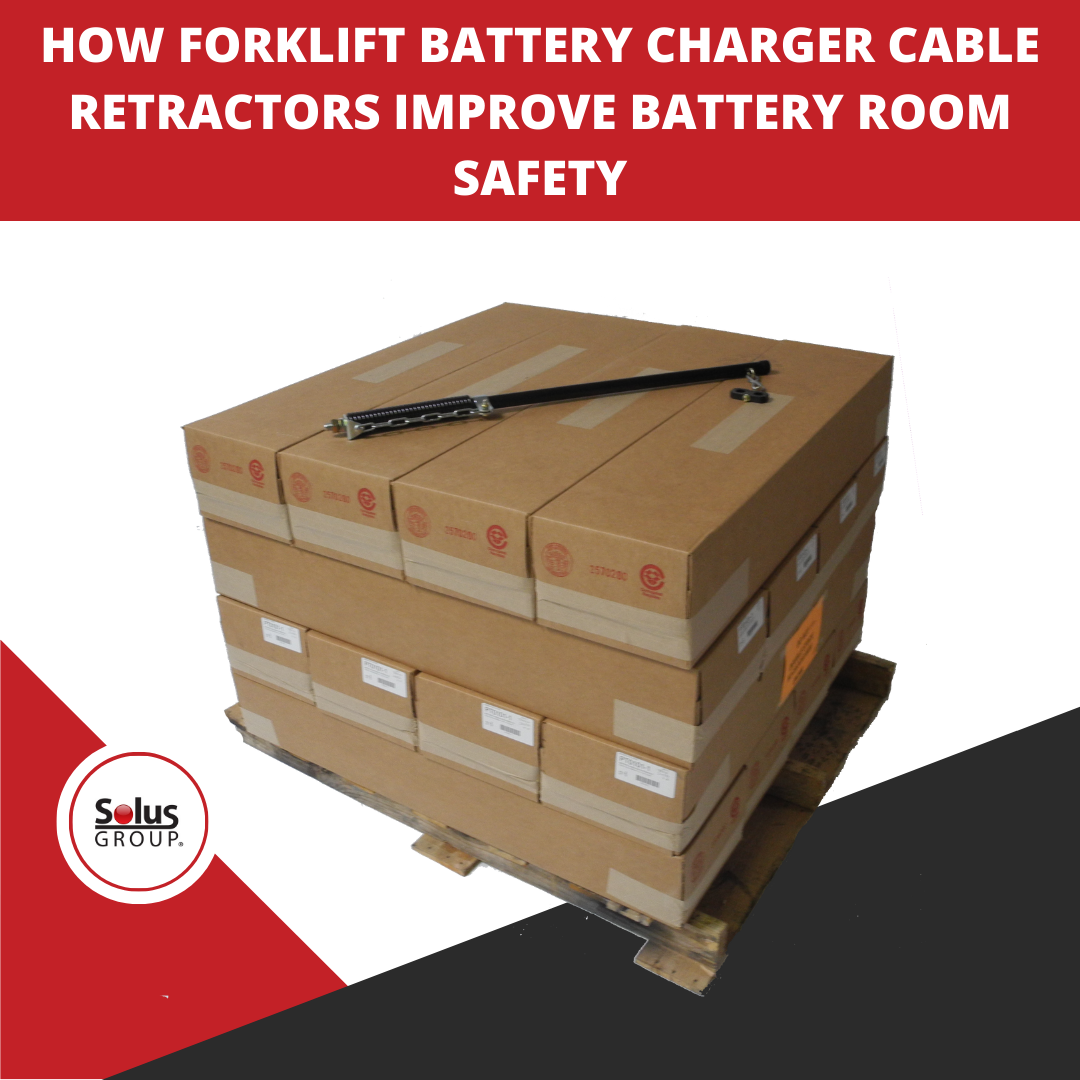We use cookies to make your experience better. To comply with the new e-Privacy directive, we need to ask for your consent to set the cookies. Learn more.
How Forklift Battery Charger Cable Retractors Improve Battery Room Safety

Don’t just take our word for it. Here’s the Occupational Safety and Health Administration (OSHA) on the “changing and charging [of] storage batteries” in the context of powered industrial trucks:
1910.178(g)(2)Facilities shall be provided for flushing and neutralizing spilled electrolyte, for fire protection, for protecting charging apparatus from damage by trucks, and for adequate ventilation for dispersal of fumes from gassing batteries.
(Our emphasis.)
Charging cables are a crucial part of any “charging apparatus.” Without them, no charging can occur. So keeping cables off the ground — with battery charger cable retractors — directly leads to compliance with one aspect of an important OSHA safety standard.
Then there’s this one:
1910.178(g)(11)Precautions shall be taken to prevent open flames, sparks, or electric arcs in battery charging areas.
When a forklift severs an active charging cable by running into it, sparks, flames, and electric arcs are absolutely possible hazards. So there you have it: You should always use charger cable retractors. OSHA says so.
Choosing a Forklift Battery Charger Cable Retractor
Sure, everyone needs cable retractors mounted on their battery chargers. But what kind? There are three leading designs, and they all work great. Choosing between them will be a question of your own battery room design, where the clearance lies, what type of charger cables you use, and other pecularities of a particular facility.
Three options for cable management in the battery room include:
- Battery Pogo Stick Cable Retractor: Among the most popular styles of charger cable retractors is the “pogo stick.” It does look a bit like the classic children’s toy, and it operates by holding cables aloft when they’re not in use. To charge a battery, operators pull the spring-operated retractor down to plug in the cables. On release, the spring retracts the cable and lifts it out of harm’s way.
- Heavy Duty Cable Retractors: These enclosed steel boxes contain a retractable tension spring that keeps a line retracted, pulling the cable clamp (and cables along with it) out of aisles and off the floor. Heavy Duty Cable Retractors are designed for larger, thicker cables, and include acid-resistant clamps for longevity in the battery room.
- Magnetic Cable Mounts: The smallest, simplest method of managing charger cables is a magnetic clamp. It combines an HDPE, acid-resistant cable clamp and a strong magnet that users can attach to charger stands.
Any combination of these styles can help keep charger cables safe and functional so forklift operators can focus on moving materials, not working in the battery room. In short, cable management is an important element of battery room safety, and forklift battery charger cables retractors are the solution to this challenge.
References:
“29 CFR 1910.178 - Powered industrial trucks.” OSHA. U.S. Occupational Safety and Health Administration, n.d. Web. 25 Nov. 2019.
